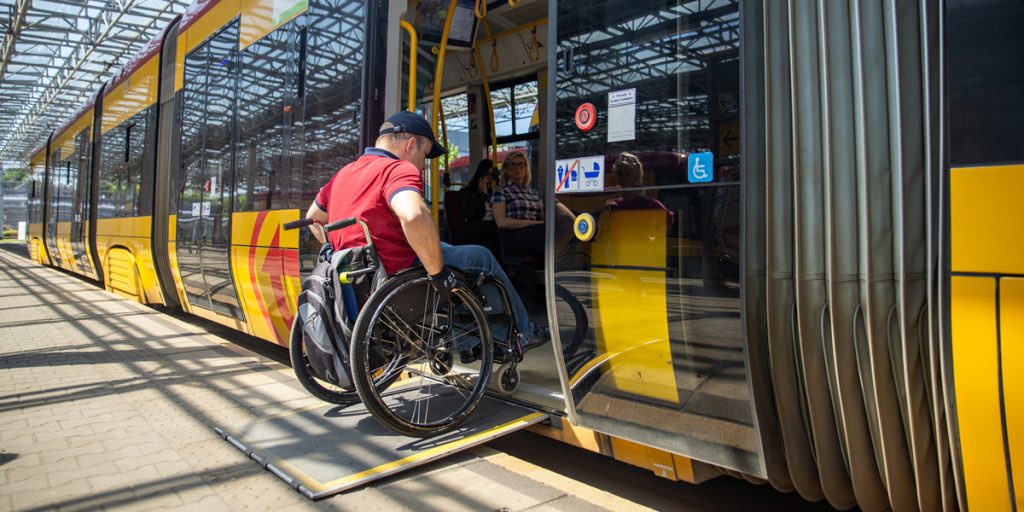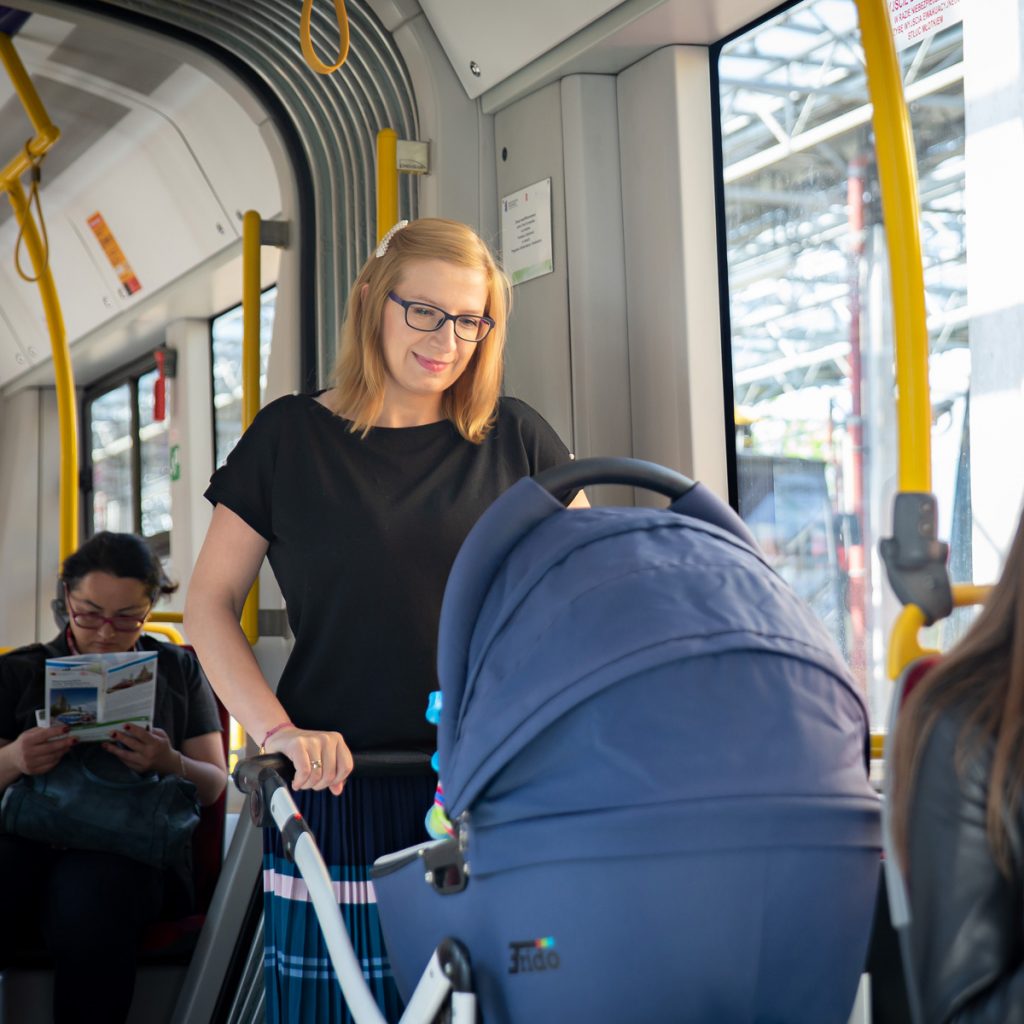Accessibility
In our activities we aspire to make public transport friendly for all passengers, especially for those with impaired mobility, who often find it difficult to move around the urban space. This group is not limited to persons using wheelchairs, but includes also, among others, senior citizens, persons who temporarily or permanently use crutches, pregnant women, or citizens with impaired vision.

We take every effort in order to adjust our means of transport to the needs of this group of passengers. At this moment we operate 100% buses with no basic barriers, and offer seats immediately from the level of the floor, and 60% in case of trams.

We also pay attention to our passengers being well informed. Each new vehicle is equipped with electronic displays and offers voice announcements providing information on the route and stops.


Low floor buses and trams are equipped with a platform enabling access for baby carriages. The platform is installed in the second doors, from the driver’s cabin. In metro and SKM trains, the right place is in the first and last doors of the train.

The passenger wishing to use the platform should signal it to the driver. They may do so by pressing buttons placed on the outside of the vehicle or by the door, as well as inside the vehicle by the seat for the passenger using the wheelchair. The buttons and the seat are marked by the wheelchair pictogram.

Designated seats with a special backrest equipped with safety belts ensure safe travelling.
Low floor buses also offer a possibility to lower the entrance threshold in order to minimise the difference between the levels of the threshold and the pavement.


This is a considerable facilitation for persons with impaired mobility.

The automatic voice messages system broadcasting information about the route and stops is available on new trams and buses. Passengers are informed about the name of the current stop and, immediately after the vehicle has moved, the name of the next one.

It is also possible to announce the line number and its destination outside the vehicle
It often happens that the lines are fully serviced with low-floor rolling stock. This information is provided in the timetable under the departure times. Otherwise, low-floor courses may be marked with a box around the departure time, and high-floor courses may be marked with a dot next to the departure time.

There is a lift available at each metro station to facilitate transport between the ground level and the platform. The lifts are clearly marked with a pictogram.

People with disabilities, in wheelchairs, with prams and carrying luggage (including bicycles) can use special wide gates to the metro.

In each metro carriage there is a system of voice announcement of subsequent stations, and in newer cars, messages are also presented on electronic displays.
There are special horizontal markings at stations and platforms to facilitate movement for the blind.



We are committed to assist persons with impaired mobility in every possible way. We take every effort to facilitate their getting around using public transport. Apart from introducing our own facilities and activities, we also rely on our passengers’ willingness to help others.



